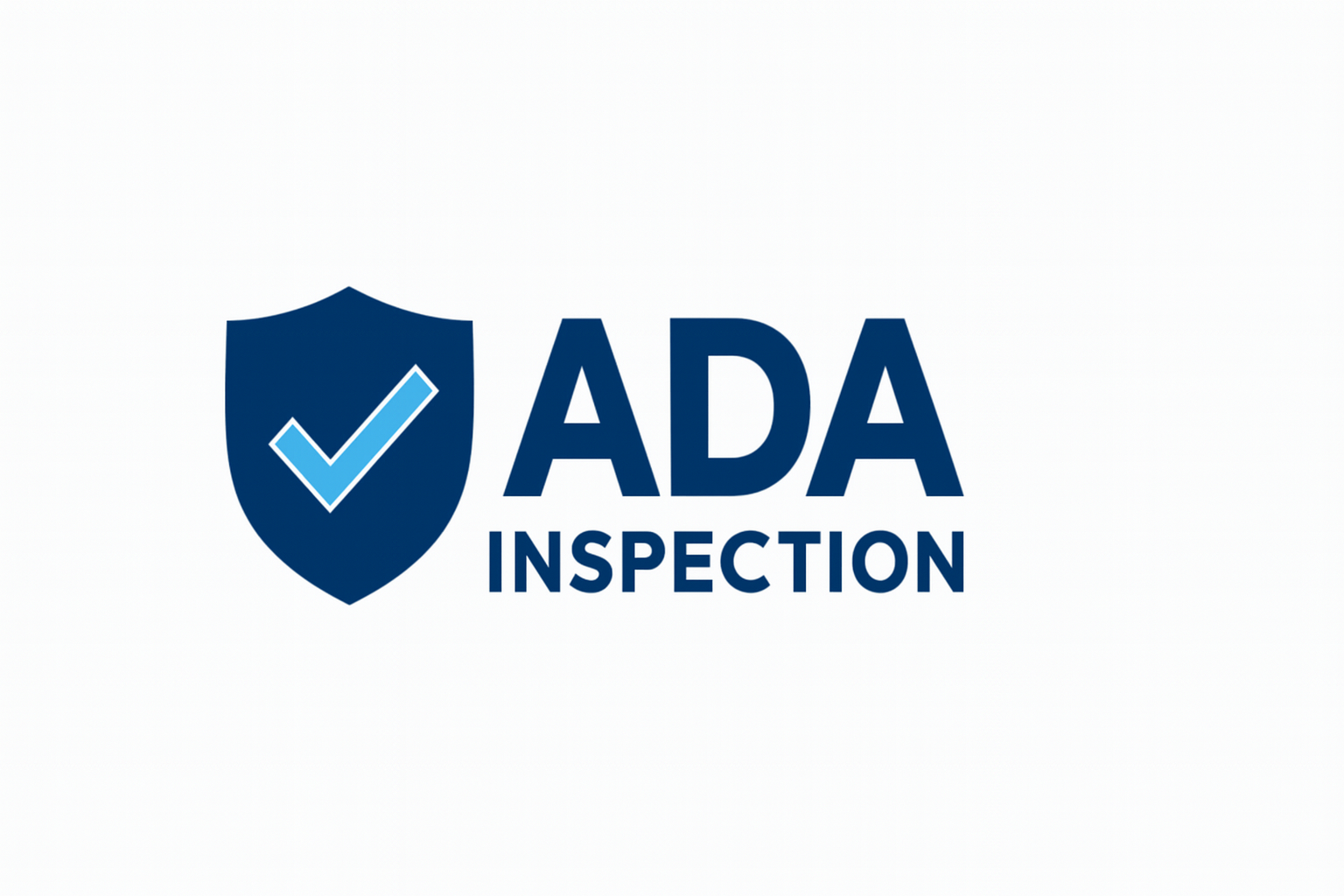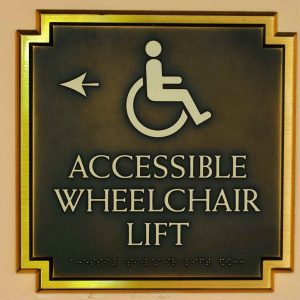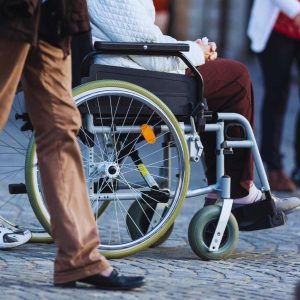ADA Noncompliance Isn’t Just a Crack in the Pavement
An ADA noncompliant sidewalk is a walking surface that doesn’t meet accessibility standards for slope, width, surface texture, or trip hazards under the ADA 2010 Standards and California Title 24.
If a sidewalk on your property has raised panels, uneven joints, steep transitions, or crumbling concrete, you’re not just looking at a maintenance issue. You’re looking at a potential lawsuit, a code violation notice, or an insurance dispute if someone gets hurt.
Property owners in California deal with this more often than people realize especially in areas with street trees, settling soil, and older construction. Tenants, HOAs, and commercial landlords feel this pressure too, because accessibility laws don’t wait until you’re “ready” to comply.
The goal here is simple: understand what makes a sidewalk fail, what the law expects, and the smartest way to fix problems before they turn into fines or legal claims.
Core Legal Facts Every California Property Owner Should Know
ADA compliance is not optional.
If your sidewalk connects to public access areas like parking lots, storefronts, lobbies, or tenant entrances it must meet accessibility requirements. That applies even if it’s technically “on private property.”You can be liable even if the city owns part of the sidewalk.
California courts have ruled that shared responsibility doesn’t protect private owners from lawsuits. If someone trips or can’t access your business due to an uneven sidewalk, you could still be held responsible.Repairs must meet ADA and Title 24 standards.
Local repair codes don’t override federal or state access laws. Just grinding down a raised panel isn’t enough if the resulting slope is still too steep or if the patch doesn’t provide a slip-resistant surface.A CASp inspection protects you before things go wrong.
Certified Access Specialists (CASp) assess your sidewalk for compliance and give you legal protections under California Civil Code §55.53. That includes reduced liability and the chance to fix issues before a lawsuit hits.The cost of repairs is usually less than the cost of doing nothing.
Fixing a few uplifted sections might cost a few thousand dollars. One lawsuit or fine? Easily $10K–$25K or more plus legal fees, mandatory upgrades, and insurance headaches.
What Makes a Sidewalk Non-ADA Compliant in California?
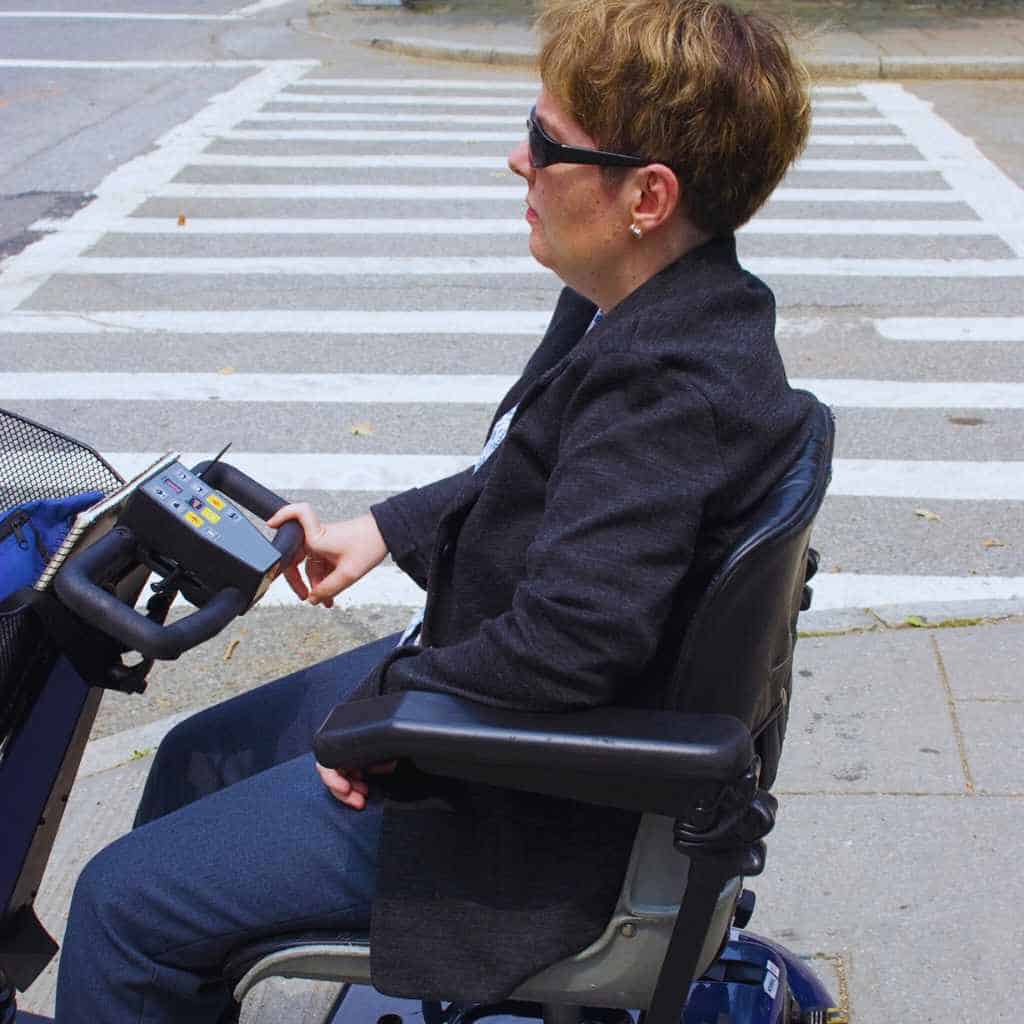
Sidewalks must provide safe, navigable access for all users including those with mobility devices. Under both ADA 2010 Standards and California Title 24, Chapter 11B, any feature that restricts, obstructs, or endangers accessible travel can trigger a violation. Here’s what that looks like in practice.
Common Violations Under ADA and Title 24
Trip hazards of ¼ inch or more
Any vertical change in level over ¼ inch (6.4 mm) is a violation unless properly beveled. A 1-inch lift caused by tree roots or cracked panels is noncompliant—and yes, it can get you sued.Cross slopes greater than 2%
Cross slope refers to the sideways tilt of a walkway. If it’s more than 1:50 (2%), the surface becomes hazardous for wheelchair users, especially in wet conditions. This is one of the most overlooked violations in sloped terrain or driveways.Clear width less than 48 inches
Public sidewalks must have at least 48 inches of clear walking space. If utilities, poles, or landscaping reduce that width—even temporarily—it violates Title 24 and ADA access standards.Missing or noncompliant curb ramps
Any change in elevation between a sidewalk and a street must be bridged with a compliant curb ramp. These ramps must meet slope, width, flare, and landing area requirements. If a corner lacks one, it’s a clear violation.Uneven, cracked, or deteriorated surfaces
Surface irregularities, especially from root intrusion or water damage, make sidewalks unsafe and noncompliant. Smooth, stable, and slip-resistant surfacing is required—not just patched-over concrete.
Key Legal Requirements to Know
ADA 2010 Standards for Accessible Design
Federal standard enforced by the U.S. Department of Justice. Violations can lead to federal lawsuits.California Title 24, Chapter 11B
State-specific access code enforced in building and site construction. Often stricter than the ADA, especially for slope and width.Local public works or municipal codes
Cities often have their own sidewalk ordinances. These may include inspection schedules, repair mandates, and shared-responsibility rules between cities and adjacent property owners.Is a 1-inch sidewalk lift illegal in California?
Yes. Anything over ¼ inch must be beveled or ramped. One inch is a clear violation.Can a sidewalk crack get me sued?
If it creates a trip hazard or impedes access, yes. Property owners have been sued over cracks, root heaves, and missing panels—even when those sidewalks were technically city-o
Why Sidewalk ADA Compliance Matters After a Violation

Once a sidewalk issue is flagged whether by a CASp inspection, the city, or a lawsuit ignoring it is no longer an option. At that point, you’re not dealing with just cracked concrete or uneven slabs. You’re dealing with civil liability, legal deadlines, and potentially thousands in statutory damages.
This isn’t just about safety. It’s about legal exposure, financial risk, and protecting the value of your property.
What Triggers an ADA Sidewalk Violation in California?
Sidewalk violations can be flagged in several ways. It doesn’t take a lawsuit to be held responsible.
Failed CASp inspections
If a Certified Access Specialist (CASp) finds your walkways noncompliant, you’ll receive a written report identifying the issues. Once documented, you’re expected to take corrective action or risk liability.City code enforcement notices
Local agencies often inspect sidewalks after resident complaints or during city maintenance reviews. If they determine your segment is a hazard, they may issue a repair order or notice of violation.Private complaints and legal demand letters
Anyone denied safe access whether a tenant, shopper, or pedestrian can file a complaint. Many lawsuits start with a demand letter citing Title III of the ADA or California’s Unruh Civil Rights Act.Injury claims from tenants or pedestrians
A trip-and-fall injury tied to a known sidewalk defect opens the door to premises liability lawsuits. Even if the city owns the land, adjacent property owners are often named in the suit.
What Happens If You Ignore Sidewalk ADA Violations?
The cost of doing nothing is often far higher than fixing the issue. California law makes that clear.
ADA lawsuits under Title III or the Unruh Civil Rights Act
These are civil rights claims not personal injury cases. That means they don’t require proof of intent or even harm just noncompliance.Statutory damages: $4,000 per violation
California allows for automatic penalties under the Unruh Act. Each inaccessible condition can trigger a separate $4,000 fine, even if no one was injured.City repair liens or forced remediation
Municipalities can and often do step in, make the repairs themselves, and place a lien on the property for the cost.Lost tenant trust and reputational harm
For commercial sites, this isn’t just legal—it’s brand damage. Tenants expect safe, compliant access for their customers. Fail to provide it, and you risk turnover or bad press.
“I thought it was just a trip hazard now I’m in court over a 2-inch crack.” Reddit user describing the real cost of delay
Common Non-Compliance Issues That Lead to Lawsuits
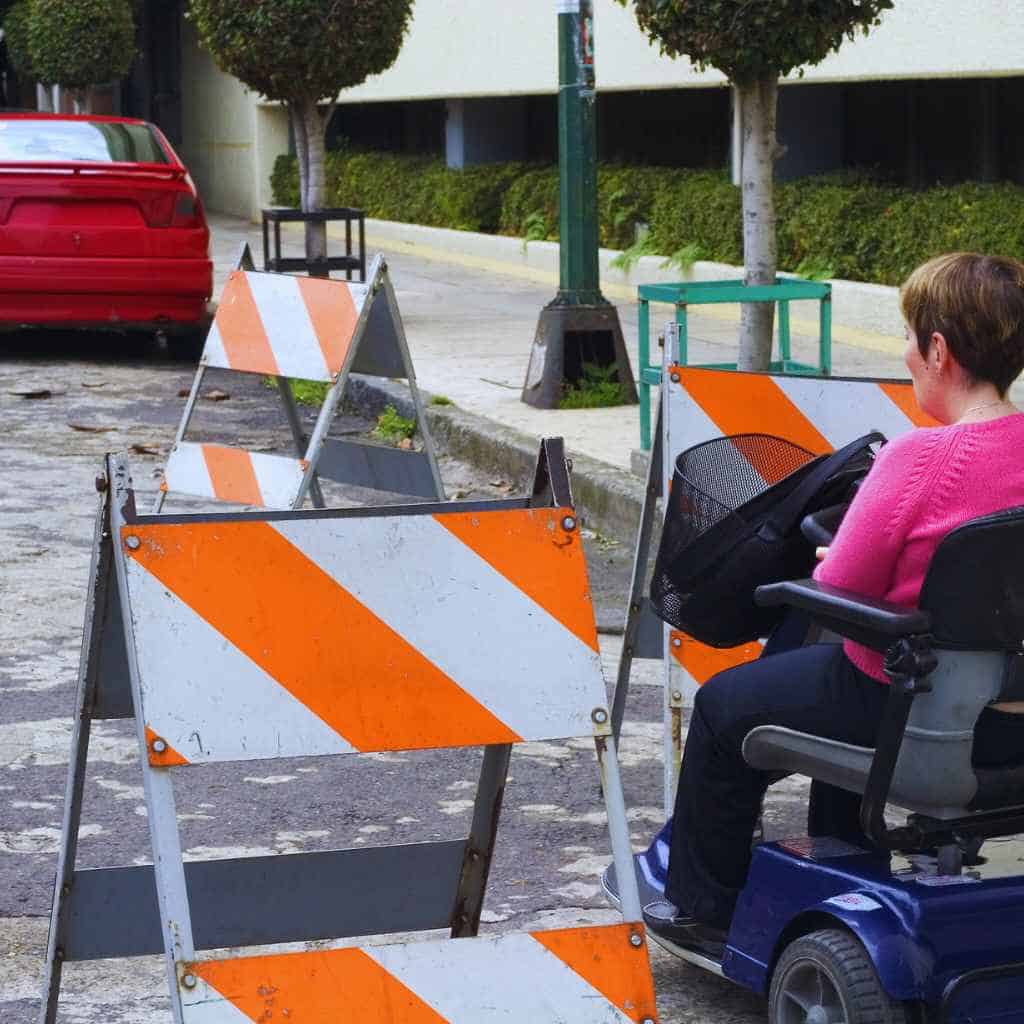
Not all sidewalk defects are obvious at first glance but that doesn’t mean they’re legally safe. Many ADA lawsuits in California stem from everyday conditions that property owners overlook or underestimate. The law doesn’t require a serious injury just a barrier to access. If a sidewalk doesn’t meet code, it can trigger statutory damages, even if no one gets hurt.
Below are the most common sidewalk issues that put property owners at risk.
What Is Considered a Trip Hazard on a Sidewalk?
Raised sidewalk panels from tree roots
Tree roots are a top cause of uneven concrete in California especially in older neighborhoods or park-adjacent properties.
If the vertical change in elevation is ¼ inch or more, it’s classified as a trip hazard under both ADA 2010 Standards and California Title 24.
At ½ inch or more, the surface must be bevelled or ramped with a slope of 1:2. Anything above that requires full panel replacement.
If not addressed properly, even a 1-inch lift can be cited as a barrier to access and lead to litigation.
How Much Can a Sidewalk Lift Before It’s a Violation?
Excessive slope or lack of curb ramps
Sidewalk cross slopes must not exceed 2% (1:50). Longitudinal slopes (in the walking direction) are allowed up to 5%, but anything steeper is considered a ramp and must meet full ramp code.
Lack of curb ramps at intersections or parking areas is one of the most commonly cited Title III violations. Without one, wheelchair users may be forced into traffic a clear barrier to access under federal and state law.
Gaps, Cracks, or Surface Instability
Sidewalks must be stable, firm, and slip-resistant.
Gaps wider than ½ inch between panels or cracks that create uneven edges over ¼ inch are considered violations.
Also risky: degraded concrete that crumbles underfoot or surfaces with loose pavers or bricks. These are treated as mobility hazards especially for users with walkers, canes, or wheelchairs.
Missing Detectable Warnings or Transitions
California requires detectable warning surfaces those yellow domed tiles at curb ramps, transit stops, and pedestrian crossings.
If these are missing, worn down, or improperly installed, the transition is noncompliant. The law assumes blind and low-vision pedestrians rely on them for spatial orientation and warning of street edges.
DIY Patch Jobs That Don’t Meet ADA Specs
Quick fixes like cold patch asphalt or mismatched concrete overlays rarely comply with ADA or Title 24 specs.
Even if the surface looks flat, if the slope, width, or texture doesn’t meet code, it’s still a violation.
Plaintiffs’ attorneys often cite poor workmanship or temporary fixes as evidence of “willful neglect,” which can increase penalties
Step-by-Step: How to Fix a Non-ADA Sidewalk in California

Once a sidewalk violation is flagged, you don’t have time to guess. Property owners in California are legally responsible for addressing ADA issues fast, and to code. Here’s how to move forward without risking bigger fines or legal exposure.
Step 1 – Get a CASp Inspection or City Report
A Certified Access Specialist (CASp) inspection is the most defensible way to confirm whether your sidewalk is legally compliant.
Identifies specific ADA and Title 24 violations like slope grades, missing curb ramps, or uneven surfaces
Grants “Qualified Defendant” status if done before a lawsuit, reducing your liability under California Civil Code §55.53
Helps prioritize repairs based on risk level and accessibility impact
Alternatively, some cities may issue official notices through public works or building departments but they rarely detail the full scope of compliance.
Step 2 – Document Issues Before Repair
Before any concrete is touched, document everything.
Take clear photos from multiple angles
Record measurements of slope, height differentials, and width
Note exact locations of each violation on a site map
Save any city notices, tenant complaints, or injury reports
If a lawsuit arises, this documentation can prove you acted in good faith and followed the right steps.
Step 3 – Choose the Right Type of Repair
Not all sidewalk fixes are created equal. The type of violation determines the type of fix.
Concrete grinding works for height differences under ½ inch
Full slab replacement is required for large panel lifts or structural damage
Curb ramp retrofits may be needed to address slope violations or missing entries
Truncated dome tiles must be added for missing detectable warnings at transitions
Can I grind down sidewalk trip hazards?
Yes, if the elevation difference is less than ½ inch.
Beyond that, the slope becomes too steep to meet ADA requirements. In those cases, grinding won’t bring you into compliance and replacement is your only option.
Step 4 – Use ADA-Qualified Contractors Only
Sidewalk work must be done to code—not just “good enough.”
Hire contractors familiar with ADA 2010 Standards, California Title 24 Chapter 11B, and city permitting rules
Ensure materials meet slip resistance and slope specs
Verify trench work or curb ramp installs follow proper transitions and landings
Do I need permits to repair ADA sidewalks in California?
Yes, in most cities.
Even small fixes may require permits if they alter path-of-travel grades, drainage, or curb geometry. Some cities especially in Los Angeles and San Diego counties require specific ADA sign-offs before final approval.
Using unlicensed contractors or skipping permits is one of the fastest ways to turn a simple repair into a legal problem.
Legal Risk Reduction: Documentation, Proof & Inspections

Financial Help for Sidewalk ADA Repairs in California
Fixing the sidewalk is only part of the equation. If you’re ever taken to court or challenged by a city inspector you’ll need proof that the work was done right and to code. Documentation is your legal safety net.
Why You Need Before/After Compliance Records
Without solid records, it’s your word against the plaintiff’s. And that rarely ends well for property owners.
Take high-resolution photos before and after every fix, clearly showing slope levels, curb ramp installs, panel edges, and transitions
Use a digital level or slope meter to capture grade percentages and cross-slope compliance
Get signed documentation from licensed contractors noting exactly what was repaired, how, and when
Include any permits or inspection sign-offs from the city
Store everything securely—these records may be needed months or even years later
If you’re ever hit with an injury claim or ADA lawsuit, this paper trail helps show that your sidewalk was compliant at the time of the incident.
Should I Get a Post-Repair CASp Re-Inspection?
Yes—especially if the original violation triggered legal or city action.
A post-repair CASp inspection gives you:
A dated, third-party record showing full compliance with ADA and Title 24
Potential protection under California Civil Code §55.55, helping reduce or eliminate statutory damages
A clearer path to final approval from code enforcement, especially in cities with stricter sidewalk ordinances
It’s not legally required in all cases, but it’s a smart step for liability protection.
How do I prove the sidewalk’s fixed if someone sues later?
The answer is simple: photos, slope data, signed contractor logs, and a CASp re-inspection report. Without that, you’re exposed even if the work was perfect.
Financial Help for Sidewalk ADA Repairs in California
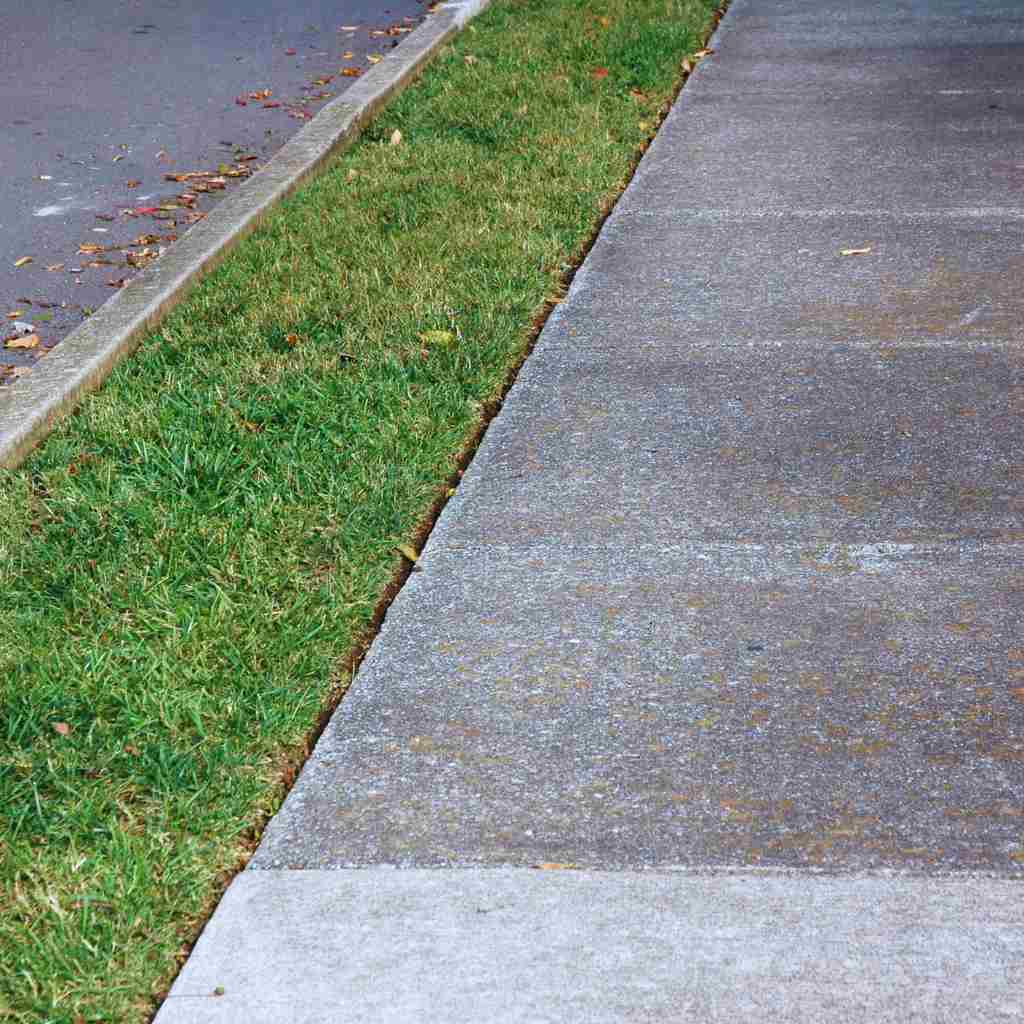
ADA sidewalk fixes aren’t cheap. Between hiring licensed contractors, getting CASp inspections, and staying compliant with Title 24, costs add up fast. But you’re not completely on your own. There are financial tools, credits, and legal protections that can ease the burden if you know where to look.
Can Insurance Cover ADA Sidewalk Repairs?
It depends on your policy and why the work is being done.
If the repair is triggered by injury claims or lawsuits, liability coverage might apply
If it’s a preventive or maintenance repair, most policies treat it as an owner responsibility
Some commercial policies offer endorsements for ADA compliance upgrades, but they’re rare
“Does insurance cover ADA sidewalk violations?”
Not usually. Unless someone’s injured and sues, most general liability policies won’t foot the bill.
What Tax Credits or Grants Are Available?
Yes, small businesses can claim federal tax credits.
IRS Form 8826 lets eligible businesses claim up to $5,000 for ADA-related barrier removals
Must have $1M or less in revenue or 30 or fewer full-time employees
Qualifying expenses include ramps, curb cuts, detectable warnings, and CASp inspections
Local programs also exist, especially in large cities:
Los Angeles offers grants through the Sidewalk Repair Program (SRP)
San Jose has funding for accessibility improvements under their Housing Department and Code Enforcement arms
Does a CASp Inspection Reduce Legal Costs?
Yes—by a lot.
Triggers a 90-day stay on lawsuits under California Civil Code §55.54
Gives you Qualified Defendant status, limiting financial exposure
Helps you negotiate or avoid statutory damages, especially if you remediate quickly
Can ADA upgrades be written off on taxes?
Yes. If you’re a small business, use IRS Form 8826 for up to $5,000 in credits.
Shared vs. Private Sidewalk Responsibility in California
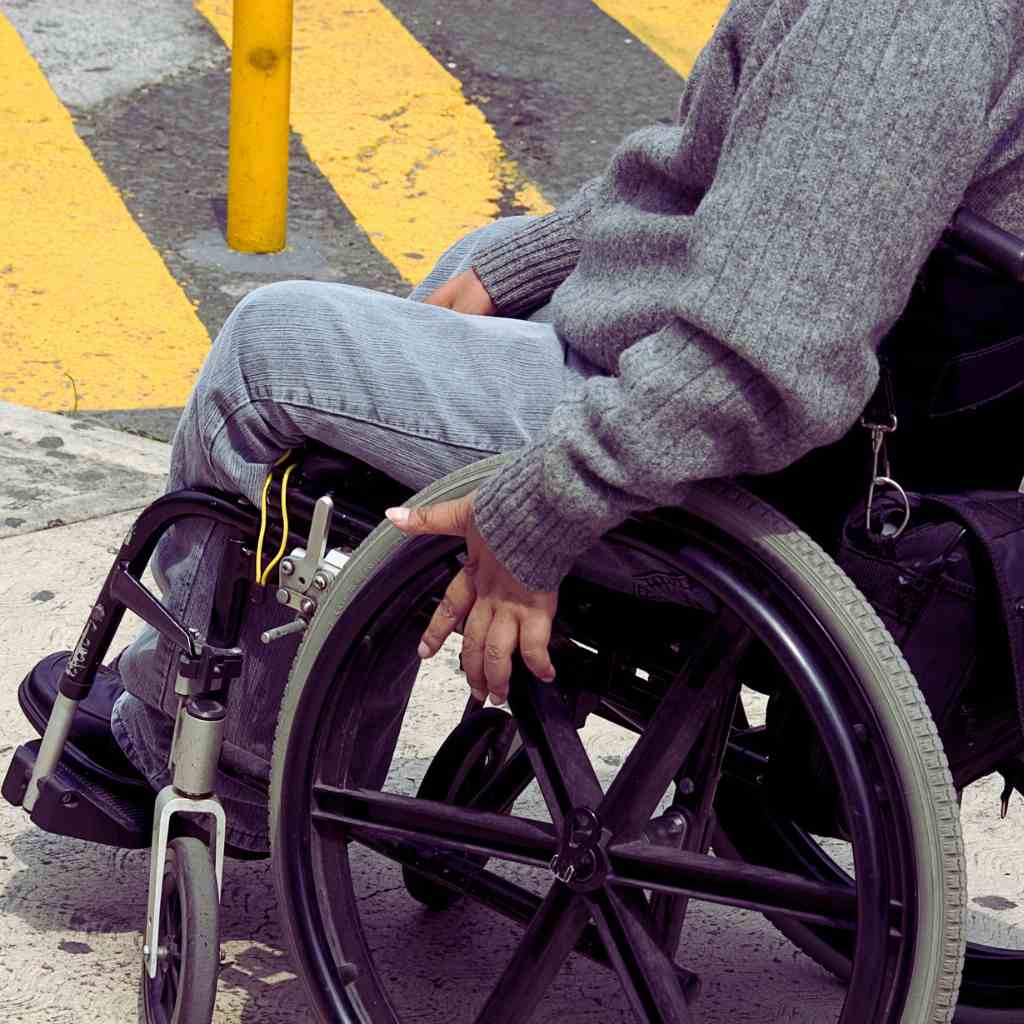
One of the biggest sources of confusion around sidewalk ADA violations is this: Who’s actually responsible for fixing it—you or the city?
The answer? It depends on where the sidewalk is, and which California city you’re in.
When the Property Owner Is Responsible
In most California cities, the adjacent property owner holds the responsibility. This applies to:
Commercial properties with sidewalks directly in front
Multi-tenant properties where the sidewalk is part of the premises
Single-family homes in cities like Los Angeles, San Francisco, Sacramento, and San Diego
If the sidewalk connects to your business or lot and someone trips, you’re probably the one who’s liable even if you didn’t build it.
Local ordinances often spell this out. For example, LA’s municipal code places responsibility for repair, maintenance, and ADA compliance directly on the abutting property owner. Same goes for San Francisco and many parts of Orange County.
When the City or County Is Responsible
There are exceptions—usually when:
The sidewalk is on public right-of-way not directly tied to private property
The damage was caused by city tree roots or utility work
You’re in a municipality that retains sidewalk ownership, like some unincorporated areas
But even then, cities often delay repairs unless the defect is flagged through a formal claim or hazard report. That’s why many owners move ahead with remediation themselves—to avoid injury liability.
Pro Tip: Don’t Guess—Check Local Rules
Before you assume the city will handle it, get clear on your local sidewalk policy. Public Works or Transportation departments typically list this on their website.
You can also start by reviewing the California ADA sidewalk requirements guide to understand your responsibilities under both state and federal rules.
Common Mistakes That Still Get Property Owners Sued
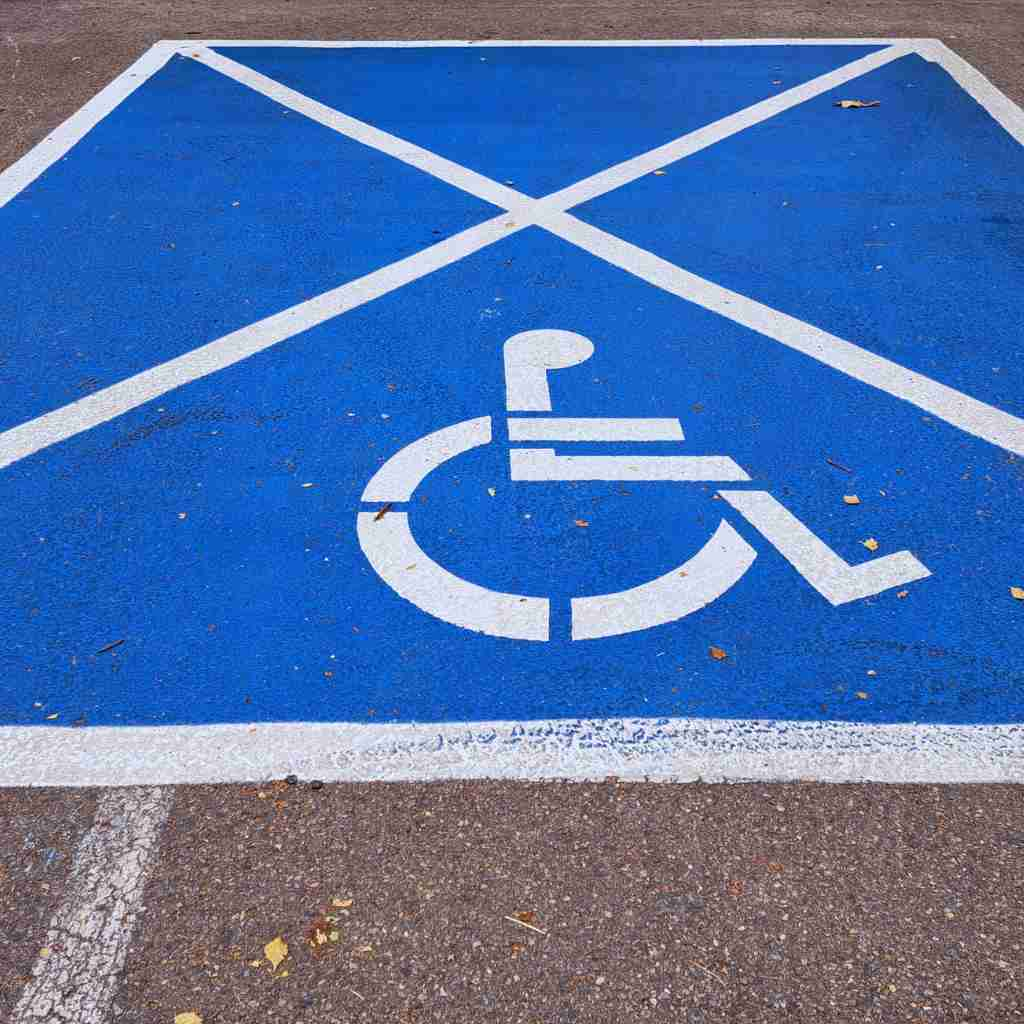
Let’s say you think you’ve fixed the sidewalk. It’s level, freshly patched, and looks safe. But here’s the catch: ADA compliance isn’t just about looks it’s about measurable standards. And even well-meaning fixes can land you in legal trouble if they miss the mark.
Mistake #1: Grinding Down Without Measuring the Slope
Problem: Property owners often grind raised edges down to reduce trip hazards which sounds fine.
Reality: If the remaining slope exceeds 1:12, it’s still a violation under ADA and CBC Title 24.
If a 2-inch lift is ground into a ramp without a flat landing or detectable warning, that can still be cited.
Mistake #2: Using Standard Concrete Patch Kits
Problem: Quick fixes with big-box patch materials look smooth but often crack within months.
Reality: Surface instability or poor bonding fails ADA’s “firm, stable, and slip-resistant” requirement. Plus, patches often don’t blend seamlessly, creating trip lips or texture mismatches.
Mistake #3: Ignoring Transitions or Missing Truncated Domes
Problem: Replacing or repairing curb ramps without adding detectable warning tiles.
Reality: Missing truncated domes those yellow textured tiles are a common reason for ADA lawsuits, especially in high-traffic pedestrian zones or near parking lots.
Mistake #4: DIY Repairs Without Understanding ADA Specs
Problem: Hiring a general handyman or doing it yourself.
Reality: Unless they follow California ada sidewalk requirements, even minor repairs can make the problem worse. Without professional measurements and documentation, it’s hard to prove compliance in court.
Bottom Line
If you’re not working with ADA-literate contractors or checking specs after repairs, you’re not protected. Lawsuits often stem from incomplete fixes that don’t meet federal slope, width, or transition rules even if the sidewalk looks fine.
What California Property Owners Ask Most
Even after reading everything above, you might still have a few “what if” questions. These are the ones that come up the most especially right after someone receives a sidewalk citation or injury notice.
What if the sidewalk is technically on city land?
You might still be responsible. In many California cities, property owners are liable for the condition of the sidewalk fronting their property even if it’s in the public right-of-way. Cities like Los Angeles, San Diego, and San Jose have local ordinances shifting maintenance duty to adjacent owners. If you’re unsure, check your municipal code or ask your city’s Public Works department.
Can I be sued if a tenant trips before I fix it?
Yes — and it happens often. Once you’re aware of a hazard, the clock starts ticking. If you delay repairs and someone is injured, they can claim negligence. This is why early documentation, a CASp inspection, and clear repair plans matter they help establish that you acted promptly and responsibly.
Can I appeal an ADA sidewalk violation?
Sometimes — but it depends on who issued it. If the citation came from the city, they may have an appeals process through Public Works or Code Enforcement. If it’s a legal claim under the ADA (e.g. a lawsuit), there’s no traditional “appeal” you’ll need legal defense and documentation that repairs were made or are underway.
Is it legal to use mats or metal plates temporarily?
Only in some cases and it must be done right. Temporary ramps, mats, or steel plates must meet ADA specs for slope, stability, and surface texture. Most don’t. If you use one, make sure it’s secured, has side transitions, and doesn’t pose a new trip hazard. Think of it as a very short-term solution while you schedule proper repairs.
What’s the fastest fix for a sidewalk trip hazard?
Concrete grinding if the vertical rise is under ½ inch. For anything over that, grinding may not meet California ADA sidewalk requirements. Larger elevation changes typically require full panel replacement or ramp retrofitting, depending on the layout and slope.
ADA Sidewalk Repair Checklist (Post-Violation)
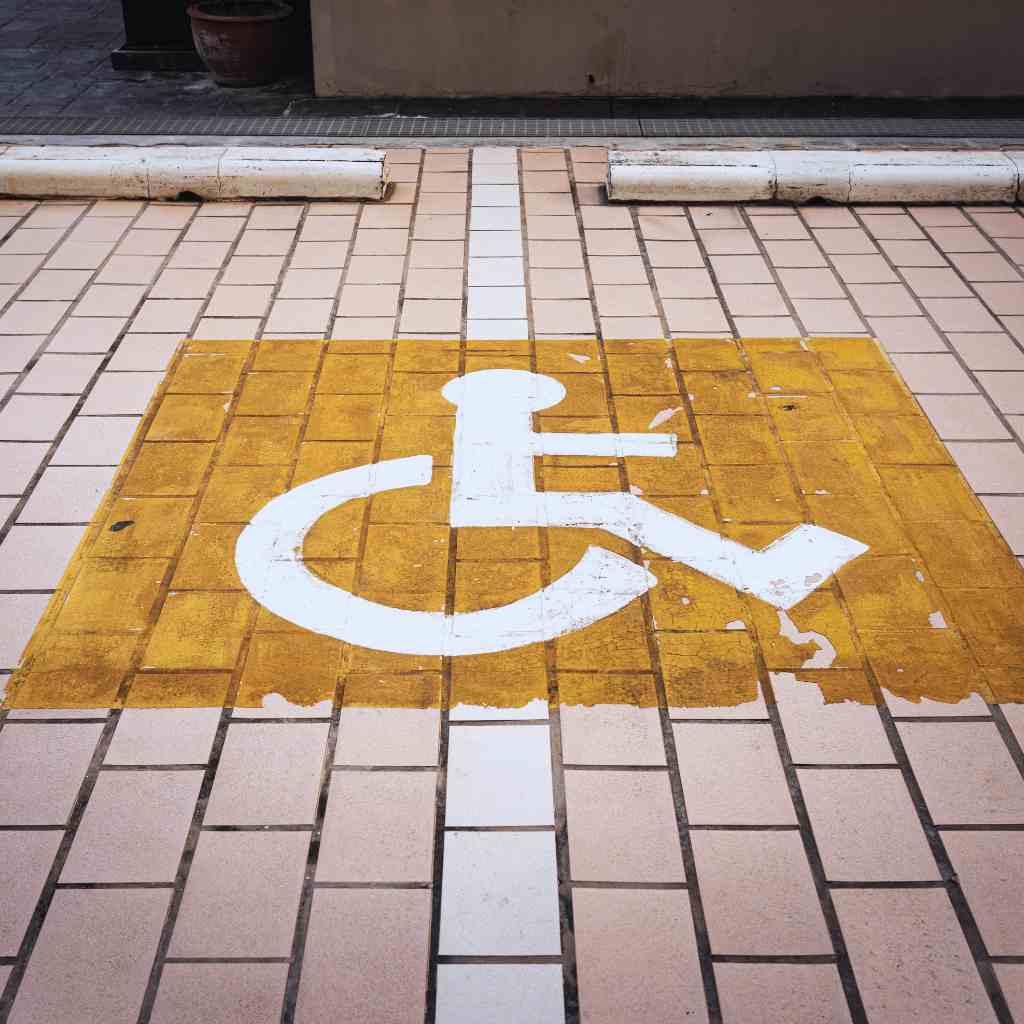
Get a CASp inspection or city violation report
Confirms the exact problem areas and gives you “Qualified Defendant” protection if done early.Take photos and measurements
Capture slope, panel height, surface width, and location details. Store everything securely.Choose the correct repair method
Concrete grinding for minor height differences under ½ inch
Full slab replacement for major cracks or lifts
Curb ramp or detectable warning tile installs if required
Hire ADA-compliant, licensed contractors
Skip handyman fixes. You need contractors who understand California ADA sidewalk requirements, CBC Title 24, and local accessibility codes.Add missing accessibility elements
Install curb ramps, truncated domes, and proper transitions where needed.Keep all records and request re-inspection
Save contractor invoices, before/after photos, and get a CASp re-inspection to validate the fix.Explore financial help
Look into IRS Form 8826 tax credits (up to $5,000), city-level accessibility grants, or insurance coverage.
Fix First, Avoid Lawsuits Later
Sidewalk lawsuits aren’t just annoying they’re expensive, time-consuming, and completely avoidable.
Fixing a non-compliant sidewalk usually costs less than defending even a single legal claim. And the key to staying ahead of trouble isn’t guesswork it’s documentation.
Start with a CASp inspection. It’s your best line of defense and gives you breathing room under California’s “Qualified Defendant” status. From there, document every step, hire contractors who understand California ADA sidewalk requirements, and keep records like your business depends on it because it does.
Accessibility isn’t just about compliance. It’s about safety, equity, and smart property management. Do it once, do it right, and you’ll save money, reduce risk, and serve the public in the process.
Trusted Resources and Legal References
https://www.dgs.ca.gov/BSC/Codes
https://www.access-board.gov/prowag/
https://www.irs.gov/forms-pubs/about-form-8826
